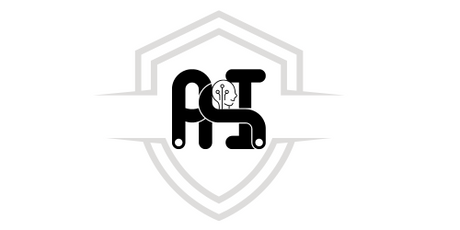Introduction:
In today's dynamic business landscape, where competition is constantly intensifying, success depends largely on effective human resources management . A talented, motivated and committed team is the cornerstone for achieving organizational goals and overcoming market challenges.
This article presents you with the ABCs of outstanding human resources management , a complete guide with the essential principles and strategies to create a work environment conducive to the development and satisfaction of your employees. Throughout this detailed manual, we will delve into each key aspect so that you can implement best practices in your organization and become a leader in human resources management .
1. Attracting and selecting the right talent: The foundation of a strong team
The first fundamental step for successful human resources management is to have the right staff for each position. This involves clearly defining the competencies and skills required for each role, and developing a rigorous selection process that allows the most suitable candidates to be identified.
1.1 Precise definition of profiles:
Start by conducting a thorough analysis of each job, identifying specific responsibilities, tasks, and challenges. Then, define the competencies, skills, and knowledge required to perform each role effectively.
1.2 Effective search channels:
Expand your talent search beyond traditional job boards. Leverage professional social networks, universities, networking events, and recommendations from your own employees to identify potential candidates.
1.3 Comprehensive assessment:
Implement a comprehensive selection process that includes structured interviews, aptitude tests, psychological assessments and group dynamics. This will allow you to gain a complete overview of each candidate's skills, knowledge and potential.
2. Foster a culture of learning and development: Investing in the future
Companies that invest in employee training and development are better positioned for success. A culture of continuous learning allows employees to update their knowledge, acquire new skills and enhance their potential, which translates into greater performance, innovation and adaptation to change.
2.1 Customized training plans:
Identify the training needs of each employee based on their position, skills and professional goals. Design customized training plans that include courses, workshops, seminars and e-learning programs.
2.2 Promotion of continuous learning:
Foster a culture where learning is a core value. Provide access to educational resources, online learning platforms, and opportunities to attend industry conferences and events.
2.3 Recognition of professional development:
Recognize and reward employees' efforts in professional development. This may include bonuses, promotions, leadership opportunities, and company commendations.
3. Motivate and recognize performance: Keys to commitment
Motivation is a determining factor in job performance. Effective human resources management must implement strategies to keep employees motivated, engaged and enthusiastic about their work. Performance recognition is a powerful tool to achieve this goal.
3.1 Set clear objectives:
Set SMART (specific, measurable, attainable, relevant, and time-bound) goals for each employee. Make sure the goals are aligned with the company’s overall goals.
3.2 Provide timely feedback:
Provide regular, constructive feedback to your employees on their performance. Focus on both achievements and areas for improvement, providing specific advice for professional development.
3.3 Implement recognition programs:
Design and implement recognition programs that reward individual and group achievements. This may include monetary awards, certificates of recognition, additional days off, and leadership opportunities.
4. Create a positive work environment: The pillar of well-being
The work environment has a significant impact on employee productivity, satisfaction and well-being. Human management must promote a positive work environment, based on respect, open communication, collaboration and teamwork.
4.1 Promote respect and inclusion:
Create an environment where all employees feel valued, respected and heard. Promote diversity and inclusion, eliminating any type of discrimination or hostile behavior.
4.2 Encourage open communication:
Establish effective communication channels that allow employees to express their ideas, concerns and suggestions. Encourage two-way communication between leaders and employees.
4.3 Promote collaboration and teamwork:
Create opportunities for employees to collaborate on projects, share knowledge, and work together toward common goals. Foster team spirit and mutual support.
4.4 Recognize the value of teamwork:
Recognize and reward achievements made through teamwork. Celebrate collective successes and highlight the importance of collaboration for the success of the company.

5. Manage performance effectively: Evaluation and continuous improvement
Periodic performance evaluation is essential to identify the strengths and weaknesses of each employee and to establish individualized improvement plans. Effective human resources management must have a transparent, fair and professional development-oriented evaluation system.
5.1 Define clear evaluation criteria:
Establish specific and measurable evaluation criteria for each job. These criteria must be aligned with the company's objectives and the skills required for each role.
5.2 Conduct periodic evaluations:
Conduct performance reviews on a regular basis, at least once a year. Provide timely and constructive feedback to each employee, highlighting their achievements and areas for improvement.
5.3 Establish individual development plans:
Together with each employee, design individualized development plans that respond to their professional needs and objectives. These plans may include training, mentoring, coaching, and experiential learning opportunities.
6. Promote open communication: Dialogue and transparency
Communication is essential for the smooth running of any team. Effective human resource management should foster a culture of open communication, where employees feel comfortable expressing their ideas, concerns and suggestions.
6.1 Accessible communication channels:
Establish diverse and accessible communication channels for all employees. This may include email, face-to-face meetings, surveys, internal forums and suggestion boxes.
6.2 Transparent and honest communication:
Maintain transparent and honest communication with your employees. Share relevant information about the company, its goals, challenges and future plans.
6.3 Encourage two-way feedback:
Encourage two-way feedback between leaders and employees. Create an environment where employees feel safe to voice their opinions and suggestions without fear of retaliation.
6.4 Listen actively and respond promptly:
Pay active attention to your employees' ideas and concerns. Respond promptly and proactively to their questions, showing that you value their opinion and are committed to continuous improvement.

7. Managing conflicts constructively: Resolution and growth
Conflicts are inevitable in any work environment. Effective human resources management must have mechanisms in place to manage conflicts constructively, preventing them from escalating and negatively affecting the team.
7.1 Early detection of conflicts:
Promote a culture of open and honest communication that allows conflicts to be identified at an early stage. Encourage employees to express their differences in a respectful and assertive manner.
7.2 Mediation and conflict resolution:
Implement clear and efficient mediation and conflict resolution processes. Train leaders and collaborators in conflict resolution and negotiation techniques.
7.3 Focus on finding solutions:
Instead of focusing on blame or punishment, focus conflict management on finding mutually beneficial solutions. Promote constructive dialogue and empathy to find solutions that satisfy all parties involved.
7.4 Learning from conflicts:
Use conflicts as opportunities for learning and improvement. Analyze the underlying causes of conflicts to identify areas for improvement in communication, collaboration, and team management.
8. Promote work-life balance: Well-being and productivity
A good work-life balance is essential for employee well-being. Human resources management should promote policies and practices that allow employees to balance their professional and personal lives.
8.1 Labor flexibility:
It offers flexible working options such as flexible hours, teleworking, reduced hours and personal leave. This allows employees to adapt their work schedule to their personal and family needs.
8.2 Digital disconnection:
Promote digital disconnection outside of work hours. Encourage employees to limit their use of email and work tools during their free time so they can rest and recharge.
8.3 Benefits and wellness programs:
Offer benefits and wellness programs that support employees’ physical and mental health. This can include health plans, fitness programs, psychological counseling, and relaxation activities.
8.4 Culture of respect for personal time:
Avoid scheduling meetings or sending urgent emails outside of work hours. Respect employees’ free time and promote a work culture that values work-life balance.
9. Caring for the health and well-being of employees: Investment in human capital
The physical and mental health of employees is an important factor for their productivity and satisfaction. Human resources management should implement health and wellness promotion programs, including physical activities, nutrition programs and psychological support.
9.1 Health promotion programs:
Organizes group physical activities, offers discounts at gyms and sports clubs, and provides information on healthy eating habits.
9.2 Nutrition programs:
Offers nutrition workshops, individualized counseling, and access to healthy food options in the workplace.
9.3 Psychological and emotional support:
Provide access to psychological and emotional support services for employees who require them. This may include individual therapy, support groups and mindfulness programs.
9.4 Healthy work environment:
Promotes an ergonomic, safe work environment free of risks to the physical and mental health of employees.

10. Lead with integrity and ethics: The fundamental pillar
Leaders play a fundamental role in human resources management . A good leader must be honest, ethical and able to inspire his team. His behavior and decisions must be aligned with the company's values and promote a positive and respectful work environment.
10.1 Lead by example:
Leaders must be role models in ethical and professional behavior. They must act with integrity, responsibility and respect in all their interactions with employees.
10.2 Transparent and honest communication:
Leaders must maintain transparent and honest communication with their team. Share relevant information, actively listen to employee concerns, and respond in a timely and proactive manner.
10.3 Delegate and empower:
Leaders must delegate responsibilities and empower their employees to make decisions and take calculated risks. This fosters trust, autonomy and professional development.
10.4 Recognize and reward achievements:
Leaders should recognize and reward the achievements of their employees, both individually and as a group. This motivates employees and reinforces positive behaviors.
10.5 Address problems in a timely manner:
Leaders must address issues in a timely and fair manner. They must listen to all parties involved, seek equitable solutions, and take disciplinary action when necessary.
Conclusion of human management:
Human resource management is not an easy task, but it is essential for the success of any company. By implementing the strategies and principles described in this article, you can create a work environment conducive to the development and satisfaction of your employees, which will translate into better performance, greater productivity and sustained growth for your organization.
Remember: Human resources management is an investment, not an expense. Investing in the development of your employees will allow you to have a talented, committed and highly productive team, which will give you a significant competitive advantage in the market.














